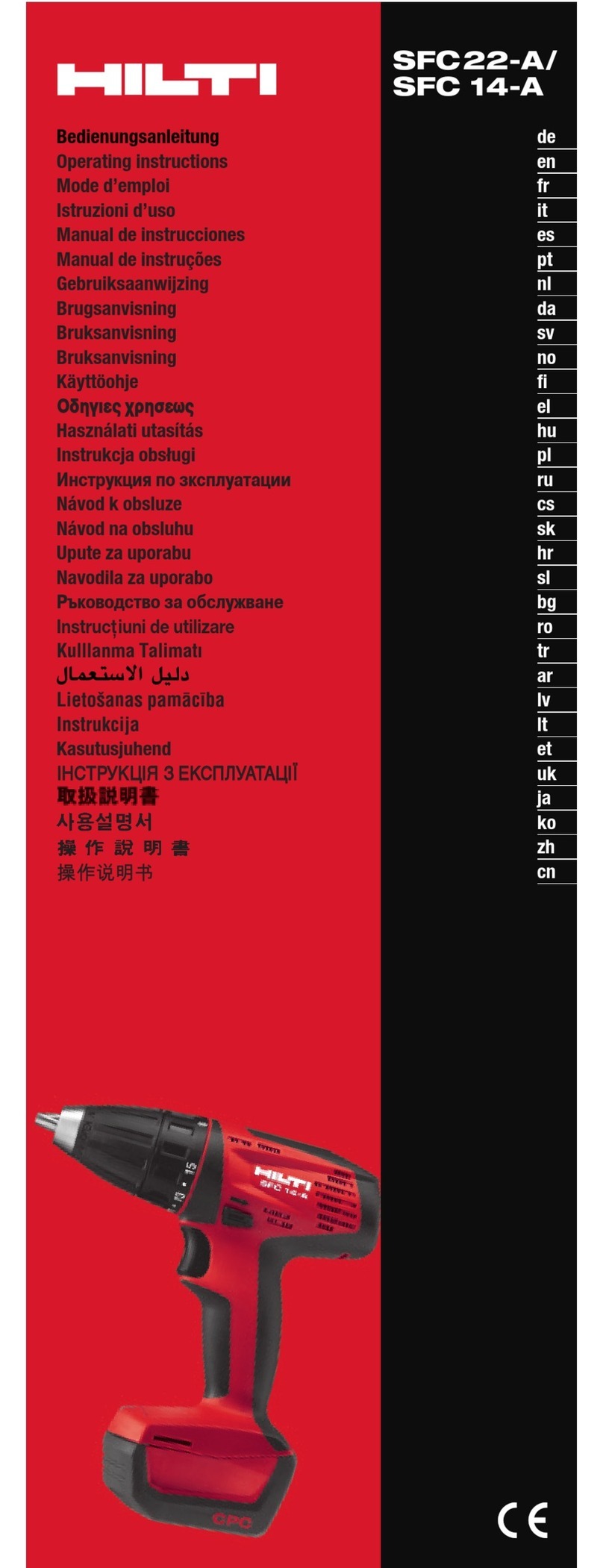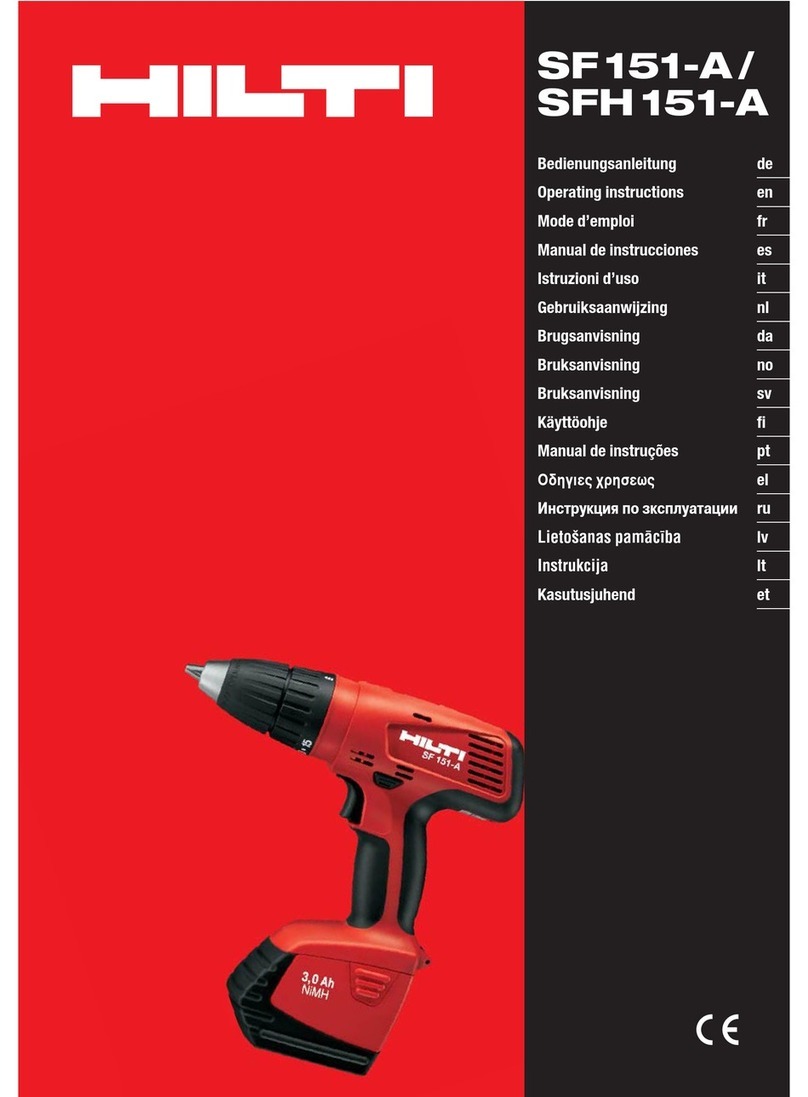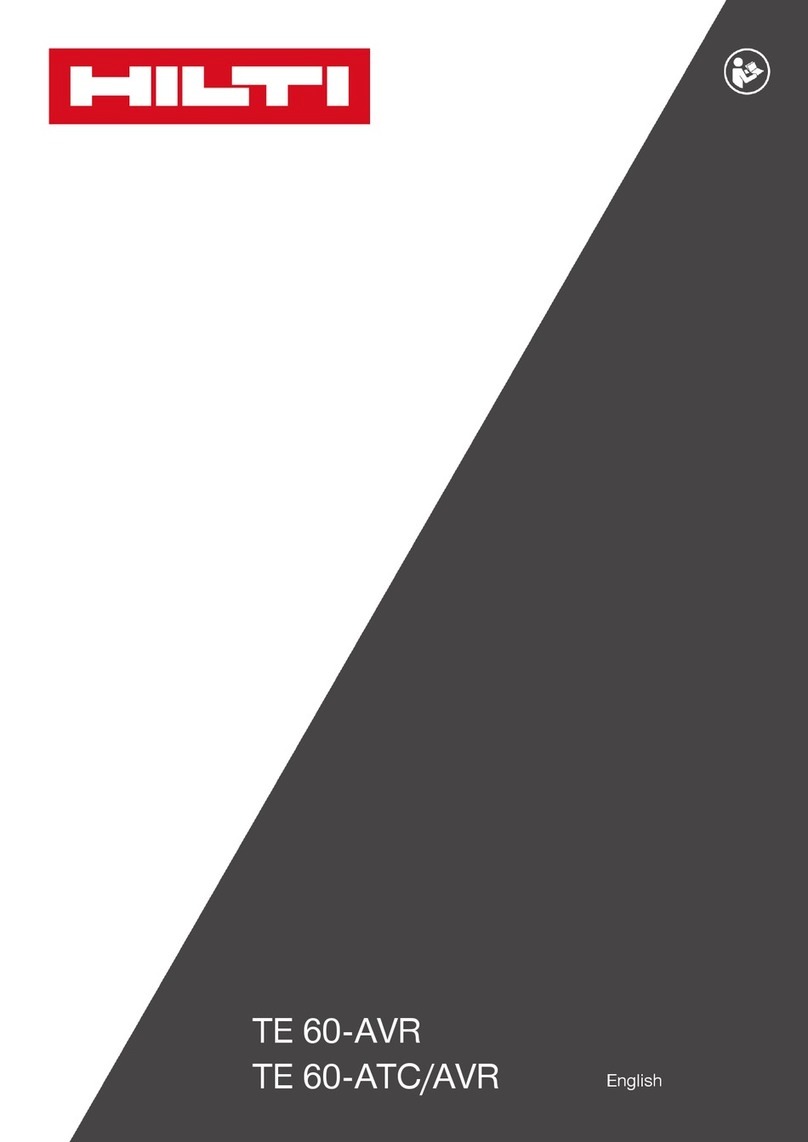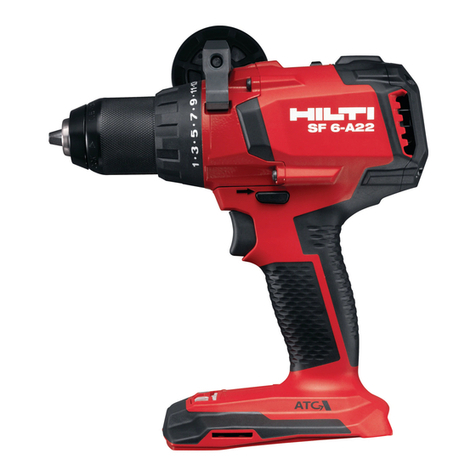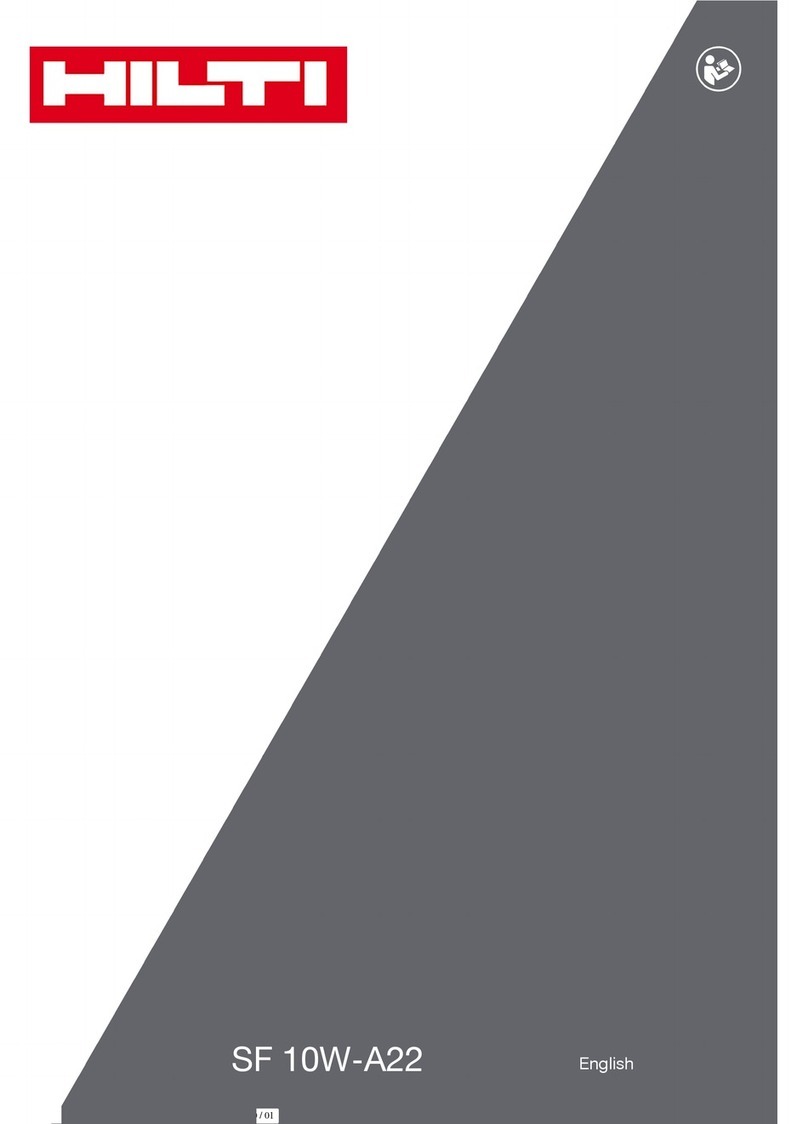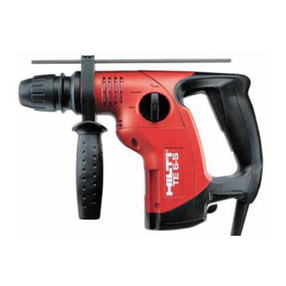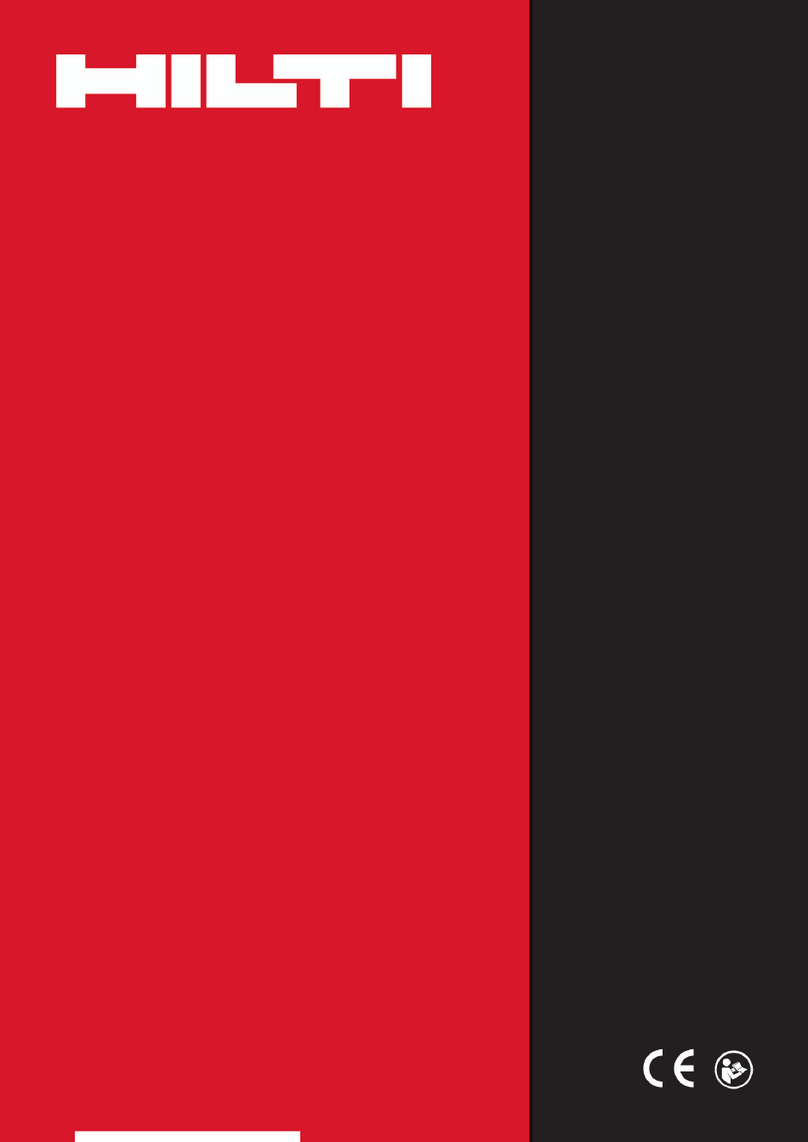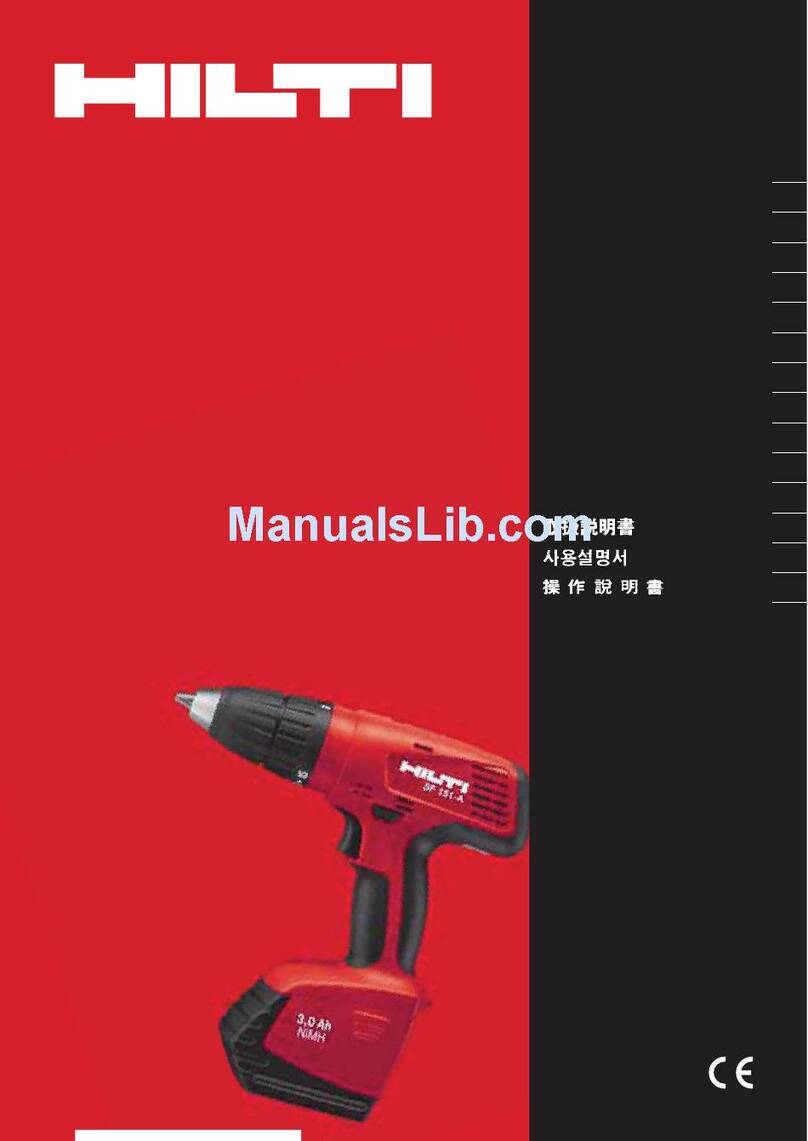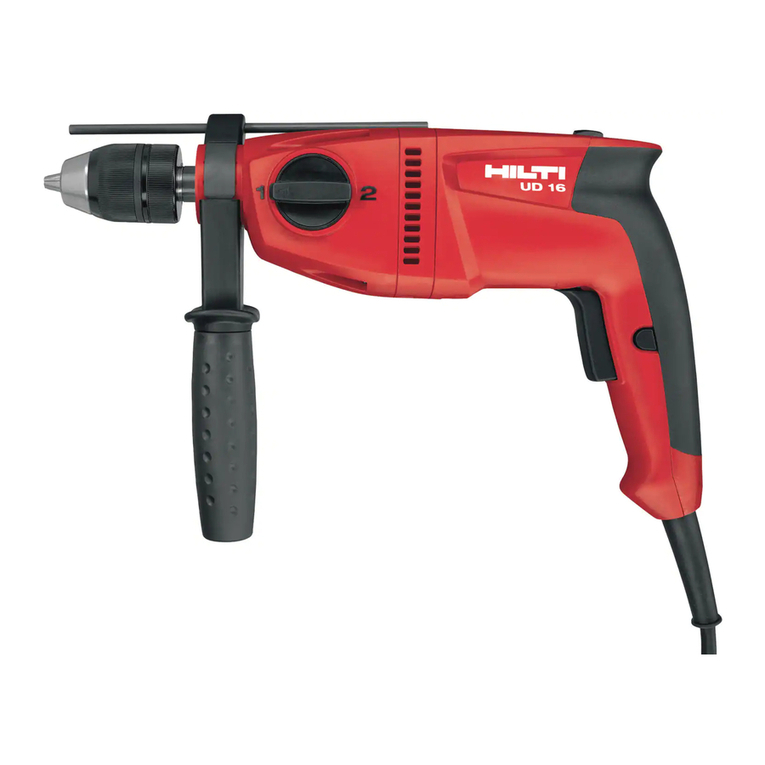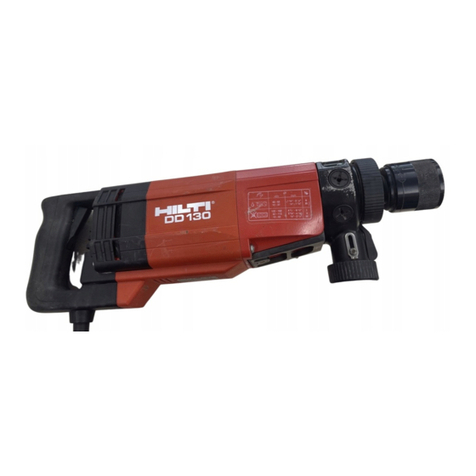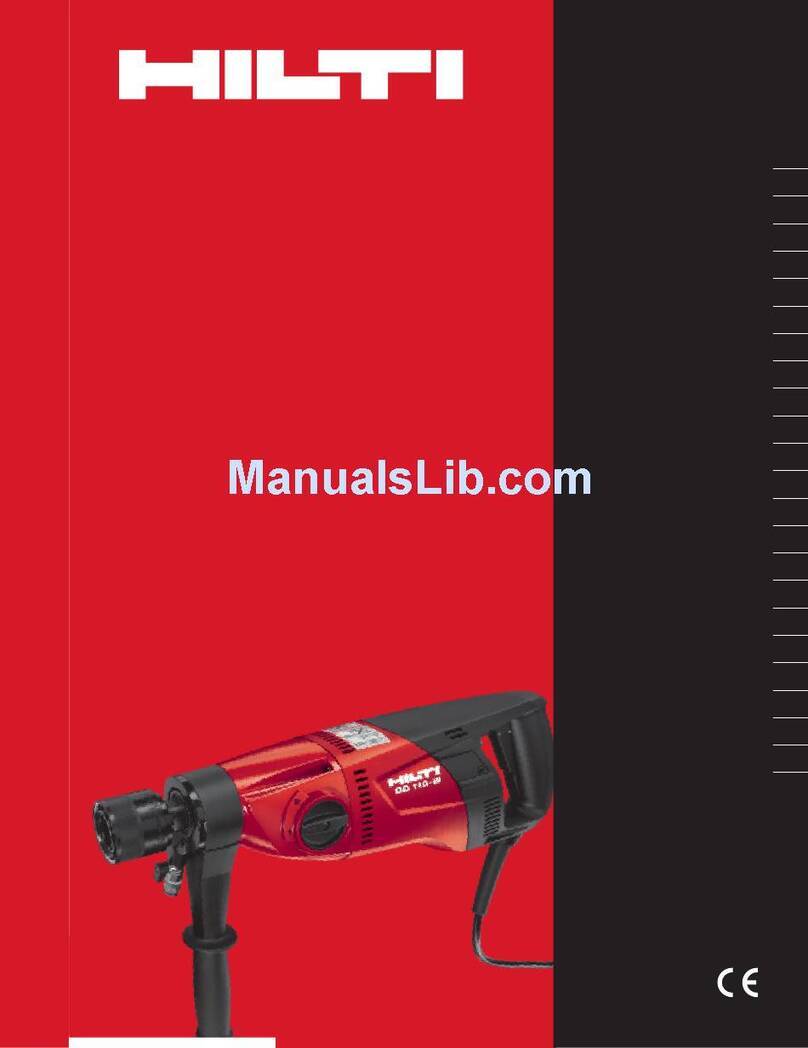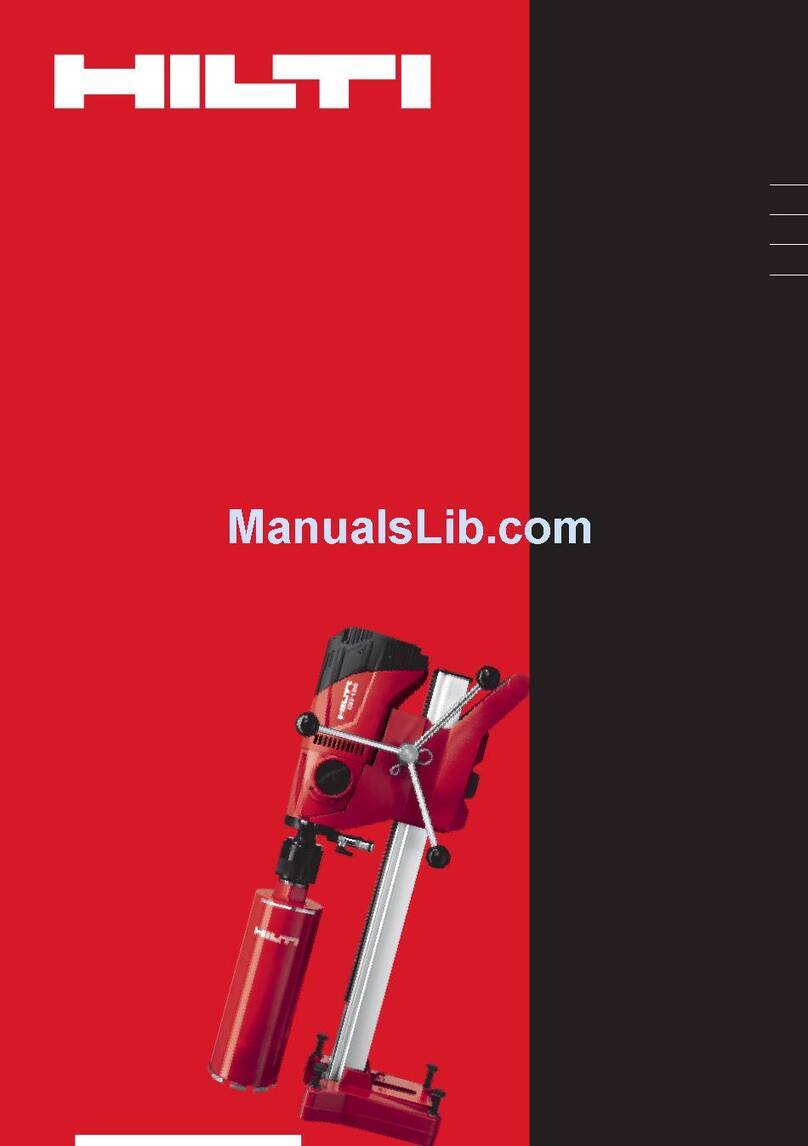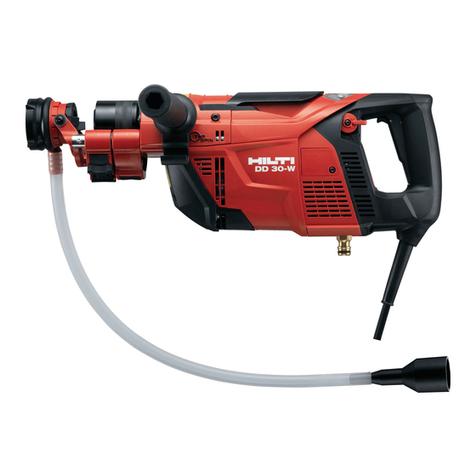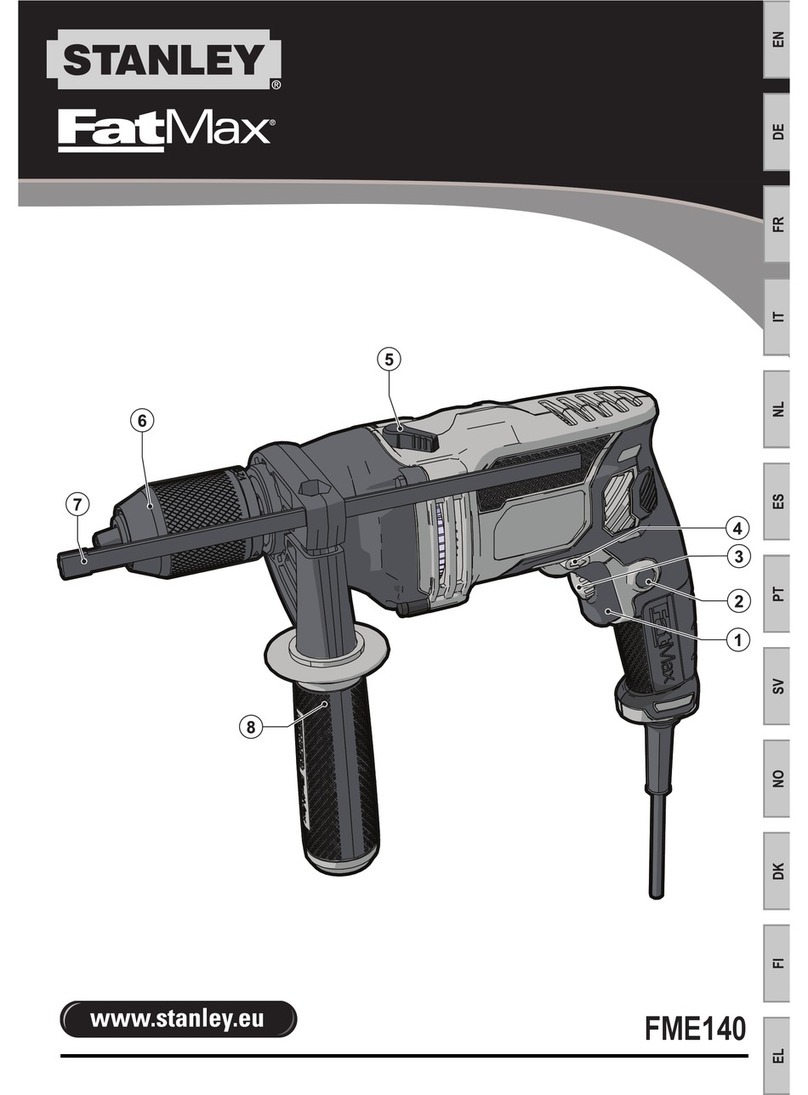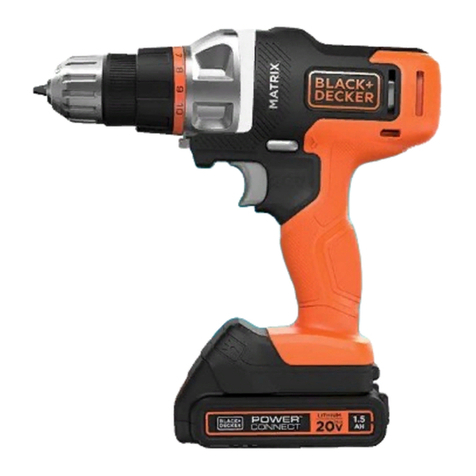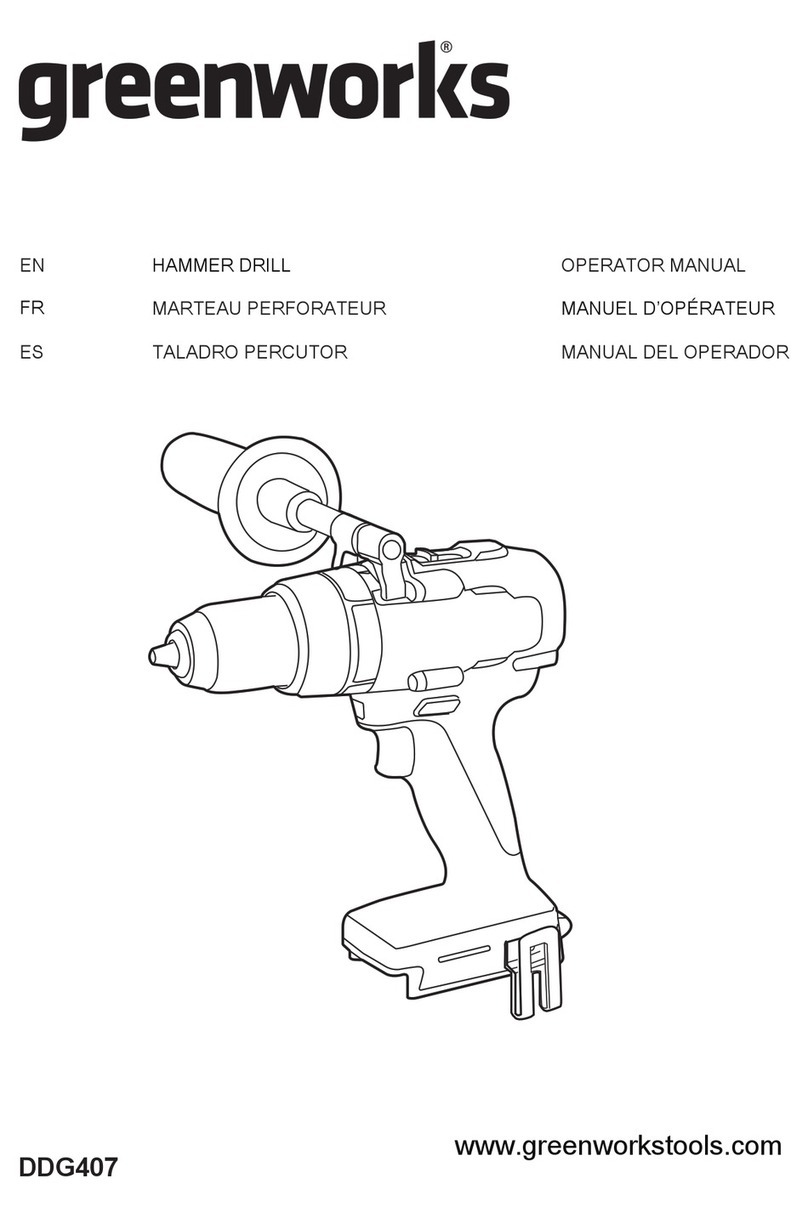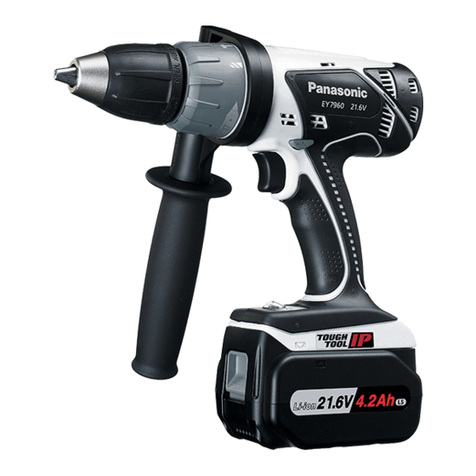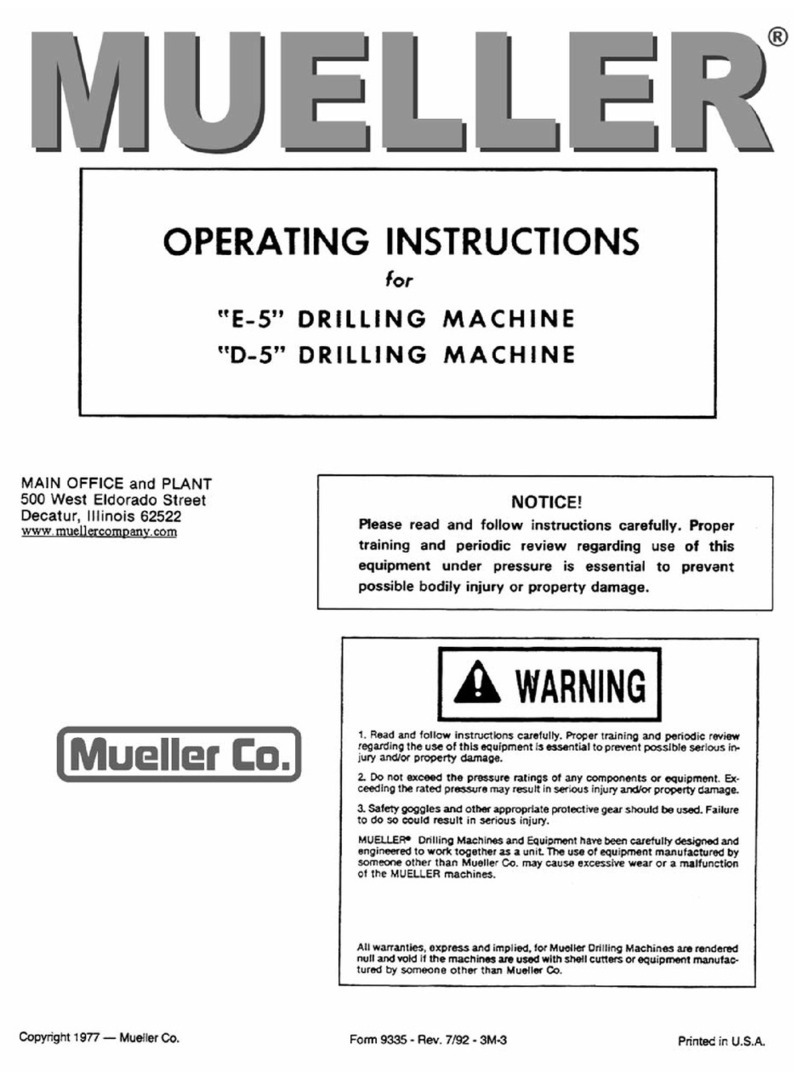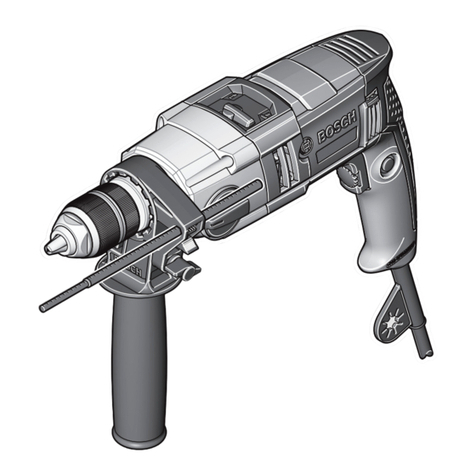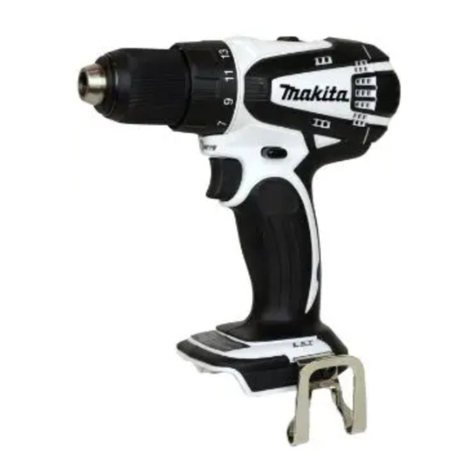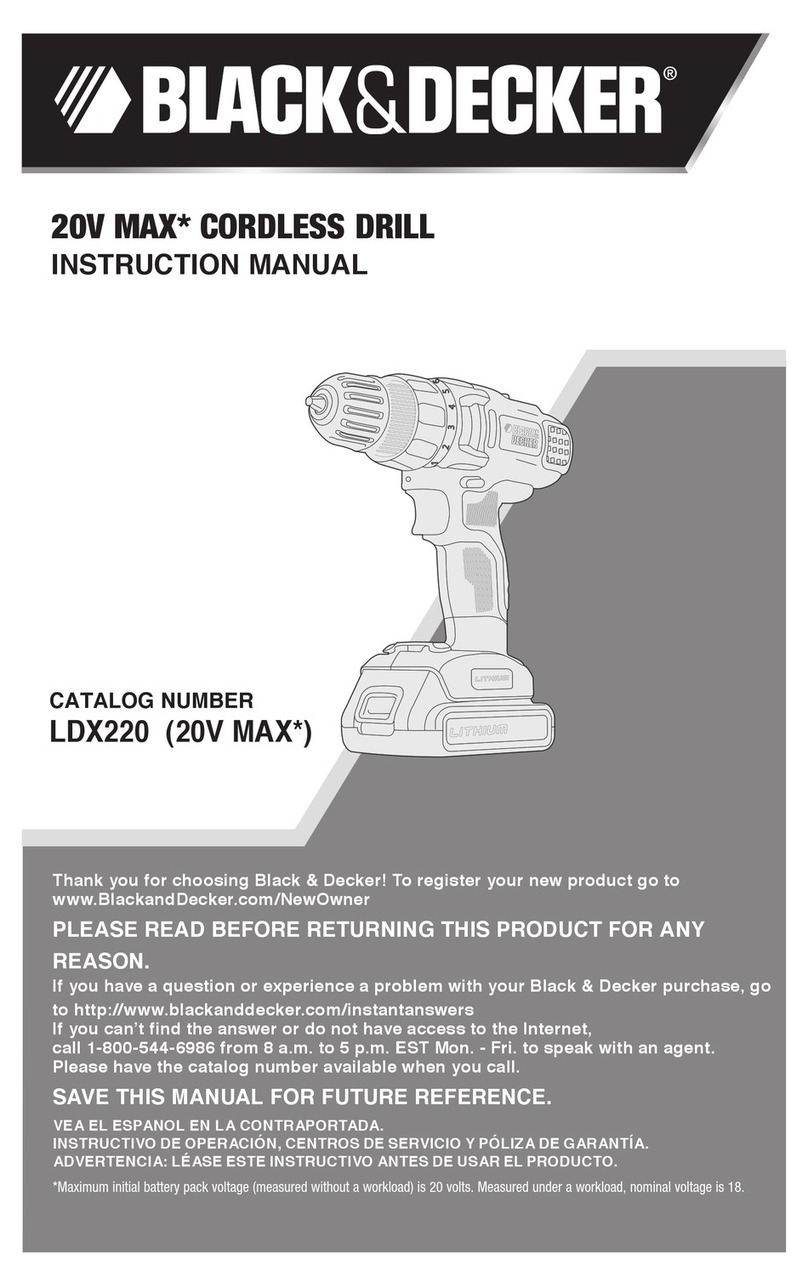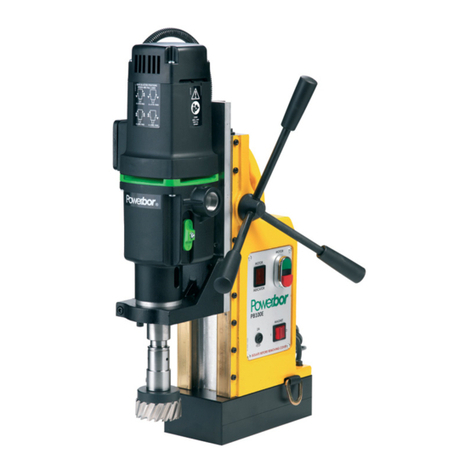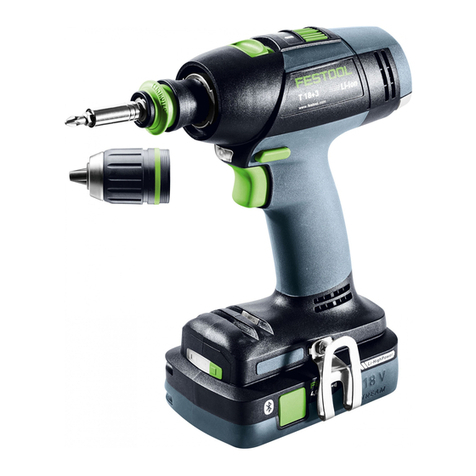
c) Hold power tools by insulated gripping surfaces
when performing an operation where the cutting
tool may contact hidden wiring. Contact with a
"live" wire will make exposed metal parts of the tool
"live" and shock the operator.
4.3 Safety instructions for screwdrivers
Hold power tool by insulated gripping surfaces, when
performing an operation where the fastener may con-
tact hidden wiring. Fasteners contacting a "live" wire
may make exposed metal parts of the power tool "live"
and could give the operator an electric shock.
4.4 Additional safety rules
4.4.1 Personal safety
a) Modification of the machine or tampering with its
parts is not permissible.
b) Always hold the power tool securely with both
hands on the grips provided. Keep the grips dry,
clean and free from oil and grease.
c) Improve the blood circulation in your fingers by
relaxing your hands and exercising your fingers
during breaks between working.
d) Avoid touching rotating parts. Switch the power
tool on only after bringing it into position at the
workpiece. Touching rotating parts, especially rotat-
ing insert tools, may lead to injury.
e) Activate the safety lock (forward / reverse switch
in the middle position) before storing or trans-
porting the power tool.
f) The appliance is not intended for use by debili-
tated persons who have received no special train-
ing. Keep the appliance out of reach of children.
g) Dust from materials, such as paint containing lead,
some wood species, concrete / masonry / stone con-
taining silica, and minerals as well as metal, may be
harmful. Contact with or inhalation of the dust may
cause allergic reactions and/or respiratory or other
diseases to the operator or bystanders. Certain kinds
of dust are classified as carcinogenic such as oak and
beech dust, especially in conjunction with additives
for wood conditioning (chromate, wood preservative).
Material containing asbestos must only be treated by
specialists. Where the use of a dust-extraction de-
vice is possible it shall be used. To achieve a
high level of dust collection, use a suitable dust
extractor. When indicated wear a respirator ap-
propriate for the type of dust generated. Ensure
that the workplace is well ventilated. Follow na-
tional requirements for the materials you want to
work with.
h) Before beginning the work, check the hazard clas-
sification of the dust that will be produced. Use
an industrial vacuum cleaner with an officially
approved protection classification in compliance
with locally applicable dust protection regula-
tions.
i) The user and any other persons in the vicinity
must wear ANSI Z87.1-approved eye protection,
a hard hat, ear protection, protective gloves and
breathing protection while the machine is in use.
4.4.2 Careful use of the power tool
a) Secure the workpiece. Use clamps or a vice to
secure the workpiece. The workpiece is thus held
more securely than by hand and both hands remain
free to operate the power tool.
b) Check that the insert tools used are compatible
with the chuck system and that they are secured
in the chuck correctly.
c) Large and heavy insert tools must only be op-
erated in first gear. There is otherwise a risk that
the tool will be damaged when it is switched off or,
under unfavorable conditions, the chuck might be
detached.
4.4.3 Careful use of the cordless tool
a) Ensure the switch is in the off position before
inserting battery pack. Inserting the battery pack
into power tools that have the switch on invites
accidents.
b) Do not expose batteries to high temperatures and
keep them away from fire. This presents a risk of
explosion.
c) Do not disassemble, squash or incinerate batter-
ies and do not subject them to temperatures over
80°C (176°F). This presents a risk of fire, explosion
or injury through contact with caustic substances.
d) Avoid ingress of moisture. Ingress of moisture may
cause a short circuit, resulting in burning injuries or
fire.
e) Use only batteries of the type approved for use
with the applicable power tool. Use of unapproved
batteries or use of the batteries in areas of application
for which they are not approved presents a risk of
fire and explosion.
f) Observe the special guidelines applicable to the
transport, storage and use of Li-ion batteries.
g) Avoid short circuiting the battery terminals. Be-
fore inserting the battery in the tool, make sure
that the battery terminals and the terminals in the
tool are free from foreign objects. Short circuiting
the battery terminals presents a risk of fire, explosion
and chemical burns.
h) Do not charge or continue to use damaged bat-
teries (e.g. batteries with cracks, broken parts,
bent or pushed-in and/or pulled-out contacts).
i) Hold power tool by insulated gripping surfaces
when performing an operation where the fastener
may contact hidden wiring or its own cord. Fas-
teners contacting a “live” wire may make exposed
metal parts of the power tool “live” and could give
the operator an electric shock.
j) If the battery is too hot to touch it may be defective.
Place the tool in a location where it can be kept
under observation, well away from flammable ma-
terials, and allow it to cool down. Contact Hilti
Service after the battery has cooled down.
4.4.4 Electrical safety
Before beginning work, check the working area (e.g.
using a metal detector) to ensure that no concealed
electric cables or gas and water pipes are present.
en
5
